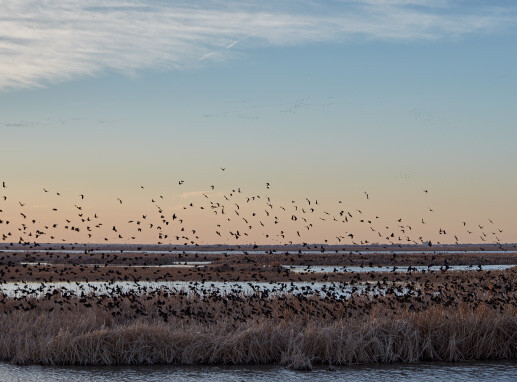Wildlife Management
The future of wildlife in Kansas is tied to the health and productivity of our working lands. Kansas Association of Conservation Districts, along with our 105 conservation districts deliver tools and programs that strengthen and preserve native and endangered wildlife species in our state.
For many wildlife species, private lands owned by Kansas farmers and ranchers make up the vast majority of their native range and habitat.
A variety of technical and financial assistance options are available to producers. Contact your local conservation district for help determining the best options for your farm or ranch. Some of the most widely-used programs include:
Wetland Reserve Enhancement Partnership (WREP)
Agricultural Conservation Easement Program (ACEP)
Environmental Quality Incentives Program (EQIP)
Great Plains Grassland Initiative (GPGI)
Working Lands for Wildlife (WLFW)
Additional Wildlife Resources and focus areas
U.S. Fish and Wildlife Service
Northern Bobwhite
The northern bobwhite was selected as a target species by NRCS state offices for good reason. Bobwhite is an indicator species for the health of the ecosystems in which they live, and research has shown “strong” positive population associations with other grassland birds (Crosby 2015, Rosenblatt 2021). In other words, success in saving bobwhite can translate into success in saving other species, especially grassland birds.
Lesser Prairie Chicken
The collaborative efforts of conservation districts and local stakeholders resulted in such a boon to the Lesser Prairie Chicken (LPC) population that the U.S. District Court of the Western District of Texas overturned FWS’s decision to list the bird under Endangered Species Act. The court determined the conservation efforts undertaken over millions of acres across five states contributed to a 25% increase in the LPC population from 2014 to 2015 and deserved recognition from the federal government.
Monarch Butterflies
The monarch butterfly is one of the most iconic butterflies in North America. Loss and degradation of habitat across the species' range have led to a detrimental impact on the number of monarchs in the U.S. over the past few decades. Many voluntary conservation efforts to combat the decline of monarchs have been developed to establish new habitat and manage existing habitat for monarchs and pollinators.
Pollinator Habitat
Many conservation districts sell custom blended seed mixes specific for wildlife habitat needs, including food plots, milkweed, honeybee gardens and pollinator habitat. Seed can be ordered even if you are not participating in a conservation program.
Injured/Orphaned Wildlife
Unlike many neighboring states Kansas conservation districts do not oversee wildlife control, rescue, rehabilition, etc. KDWP manges those resources in Kansas.
Kansas wildlife pocket guides
These informative and comprehensive booklets published by the Friends of the Great Plains Nature Center and underwritten by Evergy Green Team, Chickadee Checkoff Program, and other generous donors.

